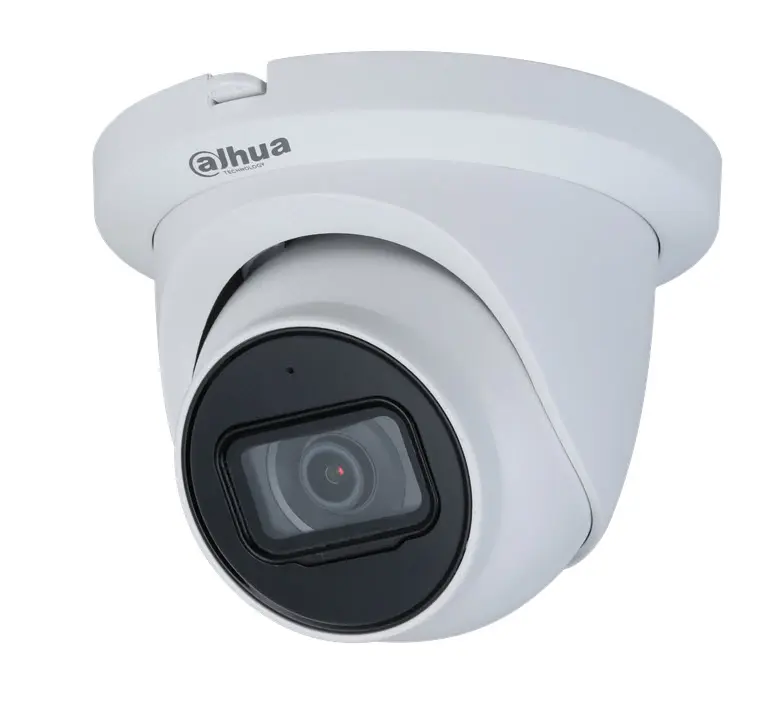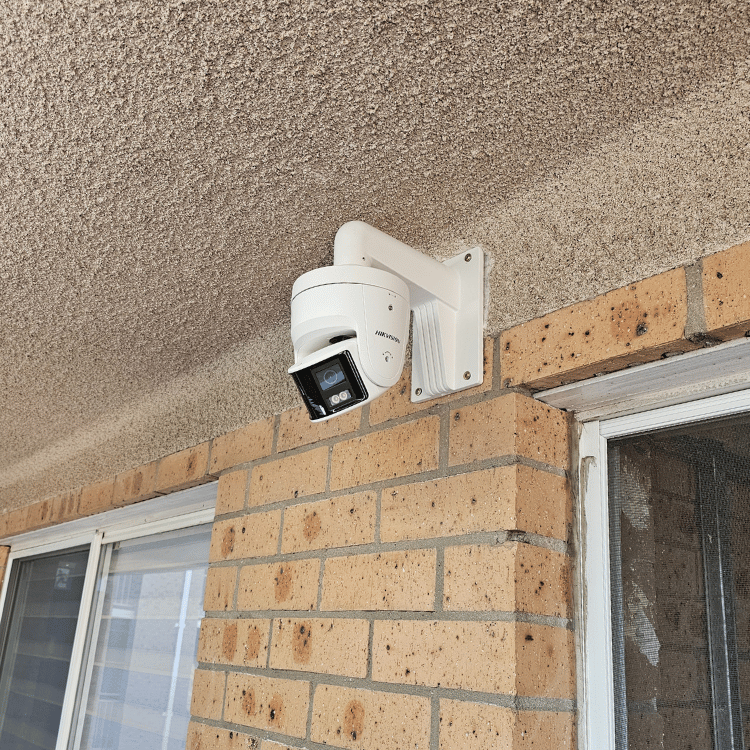What You Need to Know
Closed-circuit television (CCTV) systems have become an essential component of modern security solutions, providing surveillance and monitoring capabilities for both residential and commercial properties. At the heart of these systems lies a fundamental distinction between analogue and Internet Protocol (IP) CCTV technologies. Analogue CCTV systems have been around for decades, utilizing traditional coaxial cables to transmit video signals from cameras to a recording device.
These systems are often simpler in design and operation, making them a popular choice for smaller installations or budget-conscious consumers. On the other hand, IP CCTV systems represent a significant advancement in surveillance technology. They use digital signals transmitted over Ethernet cables or wireless networks, allowing for higher resolution images and more advanced features.
IP cameras can be connected to a network, enabling remote access and control through smartphones or computers. This shift from analogue to IP technology has transformed the landscape of security systems, offering users enhanced capabilities and flexibility. Understanding these differences is crucial for making informed decisions about which type of CCTV system best suits your needs.

When evaluating the cost of CCTV systems, both initial investment and long-term expenses must be taken into account. Analogue CCTV systems typically have a lower upfront cost, as the cameras and recording equipment are generally less expensive than their IP counterparts. This affordability makes analogue systems an attractive option for those with limited budgets or smaller properties that require basic surveillance.
However, while the initial costs may be lower, it is essential to consider the long-term implications of choosing an analogue system. Maintenance and upgrades can become more costly over time, especially as technology advances and the need for higher resolution images increases. In contrast, IP CCTV systems may require a higher initial investment, but they often provide better value in the long run due to their scalability and advanced features.
Ultimately, the decision between analogue and IP CCTV should be based on a comprehensive analysis of both upfront costs and potential future expenses.
The installation process for analogue and IP CCTV systems varies significantly due to their differing technologies. Analogue systems typically involve running coaxial cables from each camera to a central recording device, which can be relatively straightforward for experienced installers. However, this method can become cumbersome in larger installations, as the number of cables required can lead to a cluttered environment and potential signal degradation.
In contrast, IP CCTV systems offer greater flexibility during installation. They can utilize existing network infrastructure, allowing for easier integration into modern buildings with pre-existing Ethernet cabling. Additionally, many IP cameras support Power over Ethernet (PoE), which simplifies installation by allowing power and data to be transmitted through a single cable.
While the initial setup of an IP system may require more technical expertise, the long-term maintenance is often more manageable due to the ability to access and troubleshoot devices remotely.

One of the most significant advantages of IP CCTV systems is their superior image quality and resolution compared to analogue systems. Analogue cameras typically offer lower resolution images, which can limit their effectiveness in identifying faces or license plates at a distance. In contrast, IP cameras can provide high-definition video, often exceeding 1080p resolution, which allows for clearer images and more detailed surveillance.
The enhanced image quality of IP CCTV systems also enables advanced features such as digital zooming without significant loss of clarity. This capability is particularly beneficial in situations where identifying specific details is crucial for security purposes. As technology continues to evolve, the gap in image quality between analogue and IP systems is likely to widen further, making it increasingly important for consumers to consider their long-term surveillance needs when choosing between these two options.
Scalability is another critical factor to consider when comparing analogue and IP CCTV systems. Analogue systems can be challenging to expand, as adding new cameras often requires additional cabling and infrastructure modifications. This limitation can hinder the ability to adapt to changing security needs or growing property sizes over time.
In contrast, IP CCTV systems are inherently more scalable due to their reliance on network infrastructure. Adding new cameras can often be as simple as connecting them to the existing network without extensive rewiring or modifications. This flexibility allows businesses and homeowners to expand their surveillance capabilities as needed without incurring significant additional costs or disruptions.
As security requirements evolve, having a scalable system can provide peace of mind and ensure that your property remains adequately protected.
The ability to integrate CCTV systems with other security measures is becoming increasingly important in today’s interconnected world. Analogue systems typically operate independently, making it challenging to incorporate them into broader security frameworks that include access control, alarm systems, or building management solutions. This lack of integration can limit the overall effectiveness of a security strategy.
On the other hand, IP CCTV systems are designed with integration in mind. They can easily connect with various security technologies, allowing for centralized control and monitoring through a single interface. This capability not only enhances overall security but also streamlines operations by providing users with a comprehensive view of their security landscape.
As businesses and homeowners seek more cohesive security solutions, the ability to integrate different systems will play a crucial role in determining the effectiveness of their surveillance efforts.
In an increasingly mobile world, remote monitoring capabilities have become a vital feature for many security systems. Analogue CCTV systems typically lack robust remote access options, requiring users to be physically present at the recording device to view footage or make adjustments. This limitation can hinder timely responses to security incidents and reduce overall effectiveness.
Conversely, IP CCTV systems excel in remote monitoring capabilities. Users can access live feeds and recorded footage from anywhere with an internet connection through smartphones, tablets, or computers. This accessibility allows property owners to stay informed about their premises’ security status in real-time, enabling them to respond quickly to potential threats or incidents.
As remote monitoring becomes more critical in modern security strategies, the advantages of IP CCTV systems in this area are undeniable.
As technology continues to advance at a rapid pace, future-proofing your security system is essential for ensuring long-term effectiveness and reliability. Analogue CCTV systems may struggle to keep up with evolving technology trends due to their inherent limitations in resolution, scalability, and integration capabilities. As newer technologies emerge, analogue systems may become obsolete or require costly upgrades that could negate their initial cost savings.
In contrast, IP CCTV systems are designed with future advancements in mind. Their digital nature allows for easier upgrades and compatibility with emerging technologies such as artificial intelligence (AI) analytics and cloud storage solutions. By investing in an IP system today, property owners can ensure that their surveillance capabilities remain relevant and effective for years to come.
Ultimately, choosing between analogue and IP CCTV should involve careful consideration of not only current needs but also future requirements as technology continues to evolve in the realm of security solutions.
When considering the transition from analogue to IP CCTV systems, it’s essential to understand the broader context of how modern security solutions can protect your business from contemporary threats. An insightful article that delves into this topic is How Business Security Systems Protect Your Company from Modern Threats. This piece explores various security measures, including the integration of advanced surveillance technologies, to safeguard your company against evolving risks. By examining the benefits of IP CCTV systems within the framework of comprehensive security strategies, businesses can make informed decisions to enhance their protection.
FAQs
What is the difference between analogue and IP CCTV?
Analogue CCTV uses a closed-circuit system to transmit video footage to a recording device, while IP CCTV uses an internet protocol to transmit video footage over a network.
What are the advantages of analogue CCTV?
Analogue CCTV systems are generally more affordable and easier to install than IP CCTV systems. They also have a wider range of compatible equipment and are often more familiar to installers.
What are the advantages of IP CCTV?
IP CCTV systems offer higher resolution and image quality, as well as the ability to integrate with other digital systems such as access control and analytics. They also allow for remote access and viewing of footage.
Which type of CCTV is more future-proof?
IP CCTV is considered more future-proof as it is based on digital technology and can easily integrate with other digital systems. It also allows for easier upgrades and expansion.
Which type of CCTV is more suitable for large-scale installations?
IP CCTV is generally more suitable for large-scale installations due to its ability to handle higher resolution and larger amounts of data. It also offers more flexibility in terms of scalability and integration with other systems.









